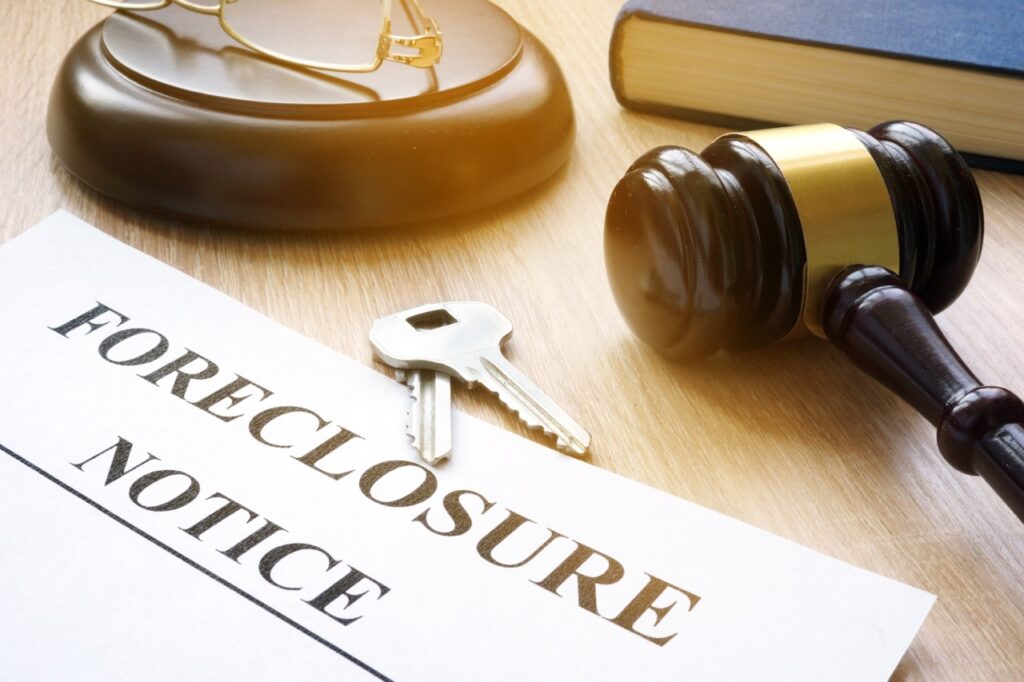Understanding Utah’s foreclosure laws is essential for any homeowner struggling financially. Knowing your rights during this potentially stressful time can give you peace of mind and allow for another chance at keeping your home without sacrificing financial stability.
Overview of Utah Foreclosure Law
A lender has the legal right to take the title of your home if you default on your mortgage payments
In Utah, foreclosures are usually carried out without a court case, known as a nonjudicial foreclosure or trustee sale. However, in some cases, lenders may choose to use a judicial foreclosure process instead.
The foreclosure process in Utah can take anywhere from a few months to over a year depending on the circumstances. Working with an experienced attorney can help individuals navigate the process and potentially avoid losing their homes.
Steps in the Foreclosure Process
Delinquent payments, notices from the lender, trustee/foreclosure sale, deficiency judgment
When a borrower misses a payment, their lender will typically send a notice stating their intent to file foreclosure proceedings. From there, the borrower typically has 30 days to get current on their payments or risk the lender moving forward with foreclosure. If the borrower doesn’t catch up on their payments, the lender will initiate the foreclosure process through legal proceedings. This can involve a series of steps, such as a public notice of the foreclosure sale and an auction where the property will be sold to the highest bidder. Understanding the steps in the foreclosure process can help homeowners make informed decisions about their next steps.
Step 1: Notice of Delinquent Account
When a borrower falls behind on mortgage payments, a Notice of Delinquency is sent by the lender. This gives the homeowner the chance to get caught up on payments.
Step 2: Preforeclosure Notice
If a borrower doesn’t get current on mortgage payments, the lender notifies the homeowner with a preforeclosure notice. This gives the homeowner an additional 30 days to cure the default. The foreclosure cannot officially be initiated until the borrower is 120+ days past due on their mortgage.
Step 3: Notice of Default
Foreclosure begins when a Notice of Default is filed at the County Recorder’s Office by a third-party trustee. The trustee is required to send copies of the Notice of Default to anyone who requests it. At this point, the borrower has an additional 120 days (three months) to get current on the mortgage, including legal fees, late fees, and/or collection fees.
Step 4: Notice of Trustee’s Sale
If the default isn’t cured after the Notice of Default, the borrower is notified of the trustee’s sale of the property. A Notice of Sale will be recorded, and the borrower must be notified 20 days in advance of the sale. The sale will also be published publicly for three weeks.
Step 5: Foreclosure Sale
The foreclosure process continues with a sale of the property, which usually results in the bank as the highest bidder.
Step 6: Deficiency Judgment
If the property doesn’t sell for at least what is owed on the loan, the lender can sue the borrower for the discrepancy, as well as expenses involved in the foreclosure process. If the lender intends to sue for the deficiency, it must be done within three months of the sale.
(if applicable)
Protections for the Homeowner During the Foreclosure Process
Sufficient notice, repayment plans, petitions to postpone
The sale of a home under foreclosure must be conducted transparently, with full disclosure to both the homeowner and any potential buyers. With these protections in place, Utah homeowners are offered protection against unlawful foreclosure.
How to Avoid Foreclosure
Loan modification, repayment plans
One of the most effective options for avoiding foreclosure is to communicate with the lender early on and request a loan modification. However, make sure you speak with a bankruptcy attorney once the foreclosure proceedings have begun because you don’t want to wait too long so that you can no longer save your home. If they grant a modification it will allow the homeowner to restructure their payments but be aware that higher interest rates may result in your loan being much more expensive.
Bankruptcy lawyers can provide guidance on budgeting, and other financial matters that can help homeowners regain control of their finances and avoid foreclosure. Ultimately, the key to avoiding foreclosure is to be proactive and seek out support before the situation reaches a crisis point.
